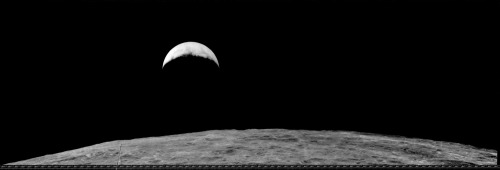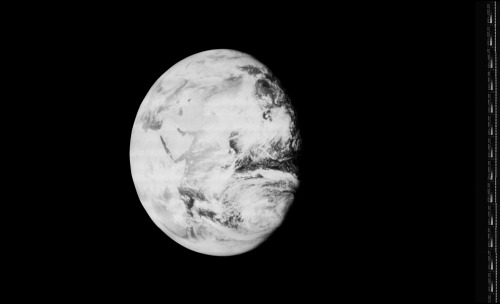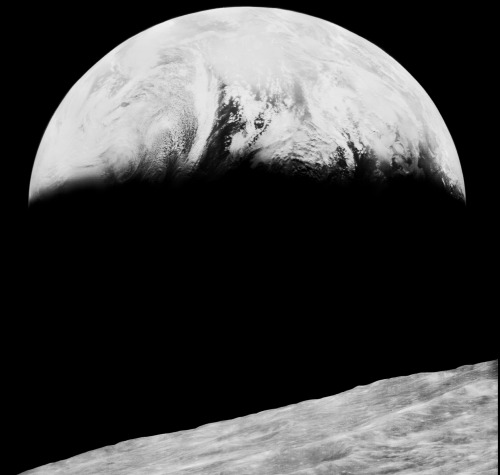The manned Apollo missions have unfairly been credited with making the first, spectacular images of
The manned Apollo missions have unfairly been credited with making the first, spectacular images of the whole Earth, like The Blue Marble, taken on December 7, 1972, and of course, the iconic Earthrise, taken on December 24, 1968.In 1966-67, NASA sent five unmanned Lunar Orbiter probes to map possible landing sites for the Apollo missions. These probes, although they only photographed in black and white, took some spectacular shots that would have been a big deal if not for the fact that they were presented in a very poor image quality due to the limitations of technology at the time. They have now been digitally restored and deserve their share of the glory in the history of photography and space exploration. Images: (1) Earthrise, from the Lunar Orbiter I, 1966; (2) Whole Earth, with East Africa and the Arabian Peninsula visible to the left, contrast enhanced in Photoshop; (3) detail of earthrise, contrast enhanced in Photoshop.The images have been restored by the Lunar Orbiter Image Recovery Program, scanned from the original tapes. These tapes could have been lost forever. After they had served their mission mapping possible landing sites on the Moon, they sat on a shelf in Maryland until Nancy Evans, who was working for NASA’s Jet Propulsion Laboratory and a co-founder of the NASA Planetary Data System, took over custody in the 1980s. She and Mark Evans from Caltech began collecting surplus hardware capable of reading the tapes, but the hardware wasn’t in working order. The tapes sat in a barn in California for two decades until, in 2007, Dennis Wingo and Keith Cowing brought the tapes and drives to the NASA Ames Research Center and started recovering the images from the original tapes.But would you see an earthrise if you were standing on the surface of the Moon? Not necessarily, and quite unlike a moonrise on Earth:An earthrise that might be witnessed from the surface of the Moon would be quite unlike moonrises on Earth. Because the Moon is tidally locked with the Earth, one side of the Moon always faces toward Earth. Interpretation of this fact would lead one to believe that the Earth’s position is fixed on the lunar sky and no earthrises can occur, however, the Moon librates slightly, which causes the Earth to draw a Lissajous figure on the sky. This figure fits inside a rectangle 15°48’ wide and 13°20’ high (in angular dimensions), while the angular diameter of the Earth as seen from Moon is only about 2°. This means that earthrises are visible near the edge of the Earth-observable surface of the Moon (about 20% of the surface). Since a full libration cycle takes about 27 days, earthrises are very slow, and it takes about 48 hours for Earth to clear its diameter. During the course of the month-long lunar orbit, an observer would additionally witness a succession of “Earth phases”, much like the lunar phases seen from Earth. -- source link
Tumblr Blog : www.tumblr.com
#science


